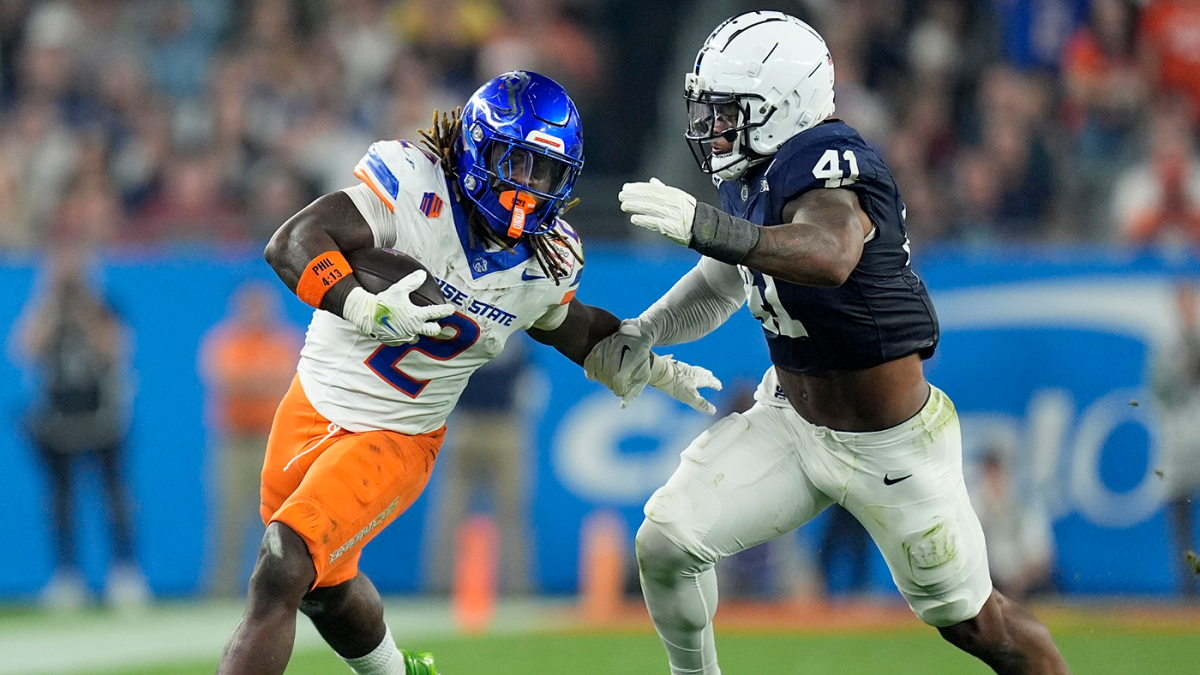The byes are bad! The byes are bad!
Do yourself a favor. If you hear somebody talking about a first-round bye in the College Football Playoff being a disadvantage because all four teams with a bye lost in the format’s inaugural season, smack them upside the head. Or, if you’re a pacifist, politely correct them.
The byes aren’t bad. You should want the bye. Ignore the results of a format that’s certainly flawed with the way it awards the byes, but the byes themselves are fine.
While the Rest vs. Rust debate is an unending thought exercise that will never truly be settled, and there could be some merit to the idea of a team being rusty, using the College Football Playoff quarterfinals as evidence is flawed in itself because there are plenty of other justifiable reasons for why the four teams with byes all lost.
Let’s go over them, shall we?
1. The system is flawed
I’ve written about it already, and I’m far from the first person to say it, but by reserving byes for conference champions, you aren’t necessarily rewarding the four best teams. While we can — and do — argue about who the best teams are and how to determine them, it’s fair to say most would agree that Boise State and Arizona State weren’t actually two of the four best teams in the country this season.
That brings us to the next explanation …
2. Two teams with byes were double-digit underdogs
Boise State was an 11.5-point underdog against Penn State. Arizona State was a 13.5-point underdog to Texas. Neither of their losses should’ve come as a surprise because both were heavy underdogs with the cards stacked against them.
The biggest surprise of their two games was that Arizona State came back in the second half and forced the game to double overtime before ultimately falling. Also, while Boise State ended up losing by 17, it was a 3-point game late in the third, and Penn State scored on a 58-yard touchdown run in the final 5 minutes to make it a 17-point final.
You could argue that the bye was integral in Arizona State’s comeback effort against a bruised and battered Texas, and it also helped Boise State hang in there before relenting late.
3. Georgia had a first-time starter at QB
Did Georgia’s offense only score 10 points and turn the ball over multiple times because it was rusty, or was it because Gunner Stockton was making the first start of his career in a College Football Playoff game against one of the best defenses in the country? Gee! I’m not sure.
I don’t say that to take anything away from Notre Dame, which was clearly the better team in the Sugar Bowl, but anybody trying to pin Georgia’s loss on an extra week of rest watched college football for the first time in their lives when they put this game on.
If there’s any game where there’s a realistic chance the bye was a problem, it was the Rose Bowl. Oregon went 13-0 this year, had the week off and then got smoked by an Ohio State team that steamrolled Tennessee a week before. Considering all the questions surrounding Ohio State following its loss to Michigan, one can argue that the Tennessee game served as a wake-up call, and the Rose Bowl isn’t possible without it.
One could argue that. They’d be wrong, but it’s a free country, and there aren’t laws against it.
The truth is, Ohio State was the favorite to win the national title before the season started, and it has been one of the best teams in the country all year long. When it plays its A-game, there aren’t many teams that can compete. If you need evidence of this, Oregon lost to the Buckeyes by 20!
If you need more evidence, Ohio State is a touchdown favorite against Texas in next week’s Cotton Bowl. And if it gets past the Longhorns, it’ll be favored against either Penn State or Notre Dame in the College Football Playoff National Championship, too.
Oh, and it was favored against Oregon, too. Yeah, it wasn’t the bye here, either.

